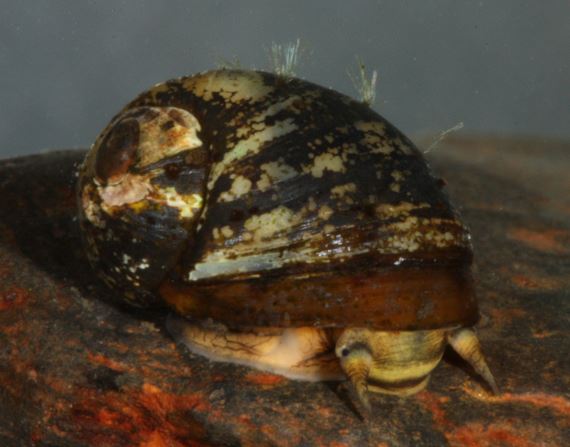
Current Freshwater Mollusk Projects
Phylogenomics of Pleuroceridae
Snails in the family Plueroceridae are found in springs, creeks, and rivers across the United States, east of the Rocy Mountains. We published the first robust phylogenetic hypothesis for Pleuroceridae in 2022. However, the 2022 study focused primarily on generating a backbone phylogeny for the species. As such, much more work is needed to understand the systematics of Pleuroceridae. We have several ongoing projects that aim to further clarify pleuroceird relationships so genus and species taxonomy can be revised in a robust evolutionary framework.
Phylogenetics and Biodiversity of freshwater mussels
Freshwater mussels have received much more research attention than freshwater snails, but the systematics of some mussel groups are still poorly understood. We are currently studying Anodontini mussels with an emphasis on species from the Uwharrie Mountains region in North Carolina. The Uwharrie Mountains are one of the oldest geological formations in the United States, and our work has uncovered multiple instances of undescribed diversity. We are working on resolving relationships among Alasmidonta species and related genera so new species can be accurately classified. This work is critical for effective conservation of freshwater mussels as conservation plans cannot be designed if species are not known to science.
Development of Genetics Management Plans
Captive propagation and reintroduction of freshwater mussels has become a common management tool over the last ten years. Freshwater mussels are now routinely propagated in hatcheries across the United States, including at many National Fish Hatcheries. We are using population genomic analyses to inform the development of propagation plans. Our research is used to inform important hatchery decisions such as choice of appropriate broodstock populations and propagation protocols that ensure appropriate levels of genetic diveristy in captively propagated populations. We work on a variety of freshwater species, ranging from Lake Sturgeon to Brook Floater mussels.
Molecular Ecology and Conservation Genomics of Freshwater Mollusks
We use population genomics data and analytical tools to assess how genetic diversity varies across a landscape so we can make inferences about ecology and evolution of freshwater mollusks. For example, we use genomic data to understand migration patterns and historical population trends. Data we generate are often used for conservation assessments by state and federal agenices. Our population genomics work mostly focuses on the freshwater snail family Pleuroceridae and the freshwater mussel families Margaritiferidae and Unionidae. However, we also do work on fish and amphibians to help USFWS conservation efforts.